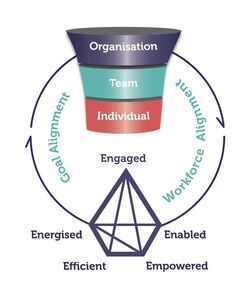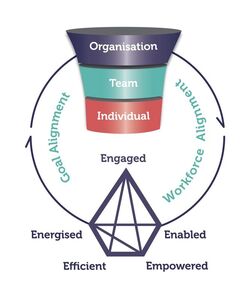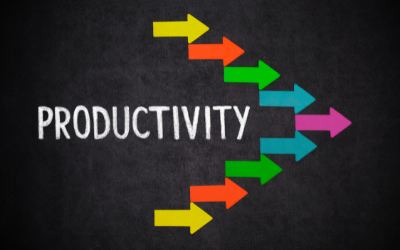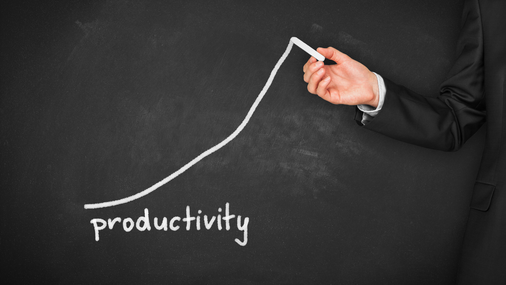|
The digital landscape is rapidly evolving, and with the ramp up of artificial intelligence, the scope for personalisation has expanded beyond traditional boundaries. One of the most ground-breaking advancements in this field is Adaptive Content Personalisation (ACP). As we journey through this new era, the integration of ACP into virtual reality (VR) signifies a transformative leap towards ultra-customised user experiences. This article explores the concept of ACP, its implementation across digital mediums, and its exciting potential in the realm of VR.
Understanding Adaptive Content Personalisation What is Adaptive Content Personalisation? Adaptive Content Personalisation refers to the dynamic tailoring of content based on individual user data such as behaviour, preferences, and history. Unlike static content, adaptive content is fluid and evolves in real-time, ensuring that each user interaction is distinct and personally relevant. The Role of AI in Adaptive Content Personalisation Artificial intelligence is the backbone of effective ACP. By employing algorithms and machine learning, AI analyses vast amounts of data to predict and respond to user needs with unprecedented precision. This capability not only enhances user engagement but also significantly improves user satisfaction. Adaptive Content Personalisation Across Digital Experiences
Adaptive Content Personalisation in Virtual Reality
The Impact of Adaptive Content Personalization on User Experience
Challenges and Considerations While ACP in VR offers immense potential, there are challenges such as privacy concerns, the need for massive data integration, and the risk of creating overly narrow user experiences that can potentially isolate individuals from diverse content. Looking Ahead: The Future of Adaptive Content Personalisation The future of ACP is promising and expansive. As technology advances, the integration of ACP with VR will become more sophisticated, offering even more personalised and immersive digital experiences. The potential for growth in this area is vast, with implications across various sectors including education, healthcare, entertainment, and retail. As we continue to navigate the digital age, the fusion of Adaptive Content Personalisation with virtual reality is not just an innovation; it's a revolution in how we consume content. By harnessing the power of AI to deliver uniquely tailored experiences, the boundaries of what digital platforms can achieve are being redrawn, promising a future where each user interaction is as unique as the individual themselves. Collagis is on a mission to drive organisational and workforce effectiveness and help teams and individuals to thrive! To further discuss innovation and transformation opportunities in your organisation, email [email protected] We'd love to hear from you! For marketing teams with a mature personalised marketing approach, I'm hearing this question a lot: how is ABM different from Personalised Marketing? So here's a quick comparison on the key differences in approach and why you need both.
What is Account-Based Marketing (ABM) & how is it different from Personalised Marketing? ABM is a strategic approach that focuses on high-value accounts in a market or business. Rather than casting a wide net, ABM tailors marketing efforts to specific accounts, creating personalised buying experiences. The goal is to build stronger relationships, improve customer acquisition, and drive business growth. Conversely, Personalised marketing uses data to target and retarget leads with messages tailored to specific customers’ interests, demographics, and buying behavior. It aims to make customers feel like the brand message was created just for them. Think of it as one-to-one marketing, where each customer receives a unique experience. They sound similar - so what are the key differences? Scope:
Approach:
Resource Allocation:
Customer Experience:
Benefits of Account-Based Marketing (ABM) for Enterprises
Why ABM Matters for Your Enterprise Accounts
By focusing on high-value accounts and tailoring your approach with ABM, you’ll see improved ROI, better customer relationships, and streamlined sales processes. To further discuss how to accelerate Account Based Marketing in your organisation, email [email protected] We'd love to hear from you! In the ever-evolving landscape of technology, extended reality (XR) is emerging as a powerful force that promises to reshape the way we work. XR, an umbrella term encompassing augmented reality (AR), virtual reality (VR), and mixed reality (MR), is no longer confined to gaming or entertainment. It’s infiltrating workplaces across various industries, driving innovation, collaboration, and efficiency.
Understanding XR: The Spectrum of Realities
Industries Benefiting from XR From healthcare to manufacturing, XR is making waves across sectors:
XR in the Workplace: A Game Changer As hybrid working has become the new norm, XR is stepping up to the plate to bring the next-level of human interaction to hybrid working:
The Future of XR In this dynamic landscape, businesses must embrace XR strategically. It’s not just a buzzword; it’s a transformative force shaping the future of work. So, put on your XR headset and step into a world where imagination meets productivity. Whether you're seeking cutting-edge XR Device-as-a-Service (DaaS), pre-configured solution bundles, or expert guidance on scaling your XR initiatives, we're your one-stop shop for immersive success. To further discuss how to leverage innovative XR solutions in your organisation, email at [email protected] As AI becomes integral to business, it's essential to understand how we can interact with these systems.
Chat interfaces like ChatGPT are the most user-friendly and best suited for non technical users, providing intuitive interactions. However, for more advanced use cases businesses have began to turn to the following interfaces as a means of interacting: AI studios Like LLM Studio and Google offer environments where non-experts can experiment with and deploy models. These platforms feature customizable workflows, extensive tools for data manipulation, user-friendly, no-code interfaces that democratise development. VR/XR for Virtual Conversational Interactions Virtual and Extended Reality (VR/XR) are setting the stage for the next generation of AI interactions, creating immersive and engaging experiences. We are using these technologies in training, customer service, and virtual meetings to provide realistic and impactful conversational encounters, revolutionising how we connect with AI and customers. Non traditional web interfaces Platforms such as Amazon Party Rock and Google TextFX are examples of the power of web-based AI interfaces. These tools are designed to be straightforward, allowing users to interact with AI technologies through simple web interfaces. The ease of access and minimal setup requirements make these platforms a go- to for businesses needing scalable and effective AI applications. Connect with us and discover how these AI interfaces can transform how your team interact with AI. Email us [email protected] About Logicus.AI Logicus is an AI consultancy, part of the Collagis group. As the world embraces this technology, we are helping our clients realise the opportunity whilst keeping their people and customers front of mind. With a focus on delivering value, we help enterprises get comfortable with the technology, focus on value outcomes, and uplift their capabilities to capture this value at scale. Get in touch no matter where you are on your journey. Sydney, Australia — April 5, 2024
Collagis, a leading strategy consulting company based in Australia, is thrilled to announce the official launch of Logicus.AI, our cutting-edge AI strategy and design consultancy. Logicus.AI is named after Homotechnologicus, symbolizing the next phase in human evolution where people and technology converge for exponential outcomes. About Logicus.AI: Logicus.AI, as the AI practice of Collagis, is committed to helping our clients understand new paradigms and build strategies that unlock value. We recognise that we are entering a world where AI is no longer a distant concept but an integral part of business transformation. Logicus.AI empowers enterprises to embrace this technology while keeping their people and customers at the forefront. Our Approach: At Logicus.AI, we focus on delivering value. Our approach involves:
Why Logicus.AI?
Get in Touch: Whether you’re just beginning your AI journey or looking to enhance existing initiatives, Logicus.AI is here to guide you. Visit our website at www.logicus.ai to explore our services and connect with our experts. Join us as we embark on this exciting journey into the future of AI. Logicus.AI — Where Intelligence Meets Imagination! 🚀 Email: [email protected] In the face of current challenges in the labour market, organisations are confronting a subtle yet potent issue known as “quiet quitting.”
A term recently accentuated by a number of articles, quiet quitting refers to a growing tendency among discontented employees to disengage, restricting their efforts solely to what’s contractually obligated. This phenomenon, though less overt than resignations, holds significant repercussions for organisational culture, productivity, and talent management. A proactive approach to address this issue is not merely advisable, but imperative. Understanding Quiet Quitting Definition and Manifestation: Quiet quitting, as delineated by various scholarly resources, embodies a form of silent protest by employees feeling undercompensated for their efforts. Manifestations range from reduced productivity to a noticeable decline in morale and engagement. Implications: The ramifications extend beyond individual dissatisfaction, permeating team dynamics, project delivery, and overall organisational performance. Financial repercussions, too, are notable, encompassing attrition, rehiring, and retraining costs. Your Role in Addressing Quiet Quitting A. Identifying the Signs: Employers need to be at the forefront of identifying and addressing quiet quitting. Essential to this is recognising metrics and indicators of disengagement, an endeavour that necessitates a nuanced understanding of both employee behaviour and performance metrics. B. Creating an Open Communication Channel: Fostering an environment conducive to feedback and open communication is pivotal. Instruments such as employee surveys, one-on-one discussions, and regular feedback loops can significantly aid in understanding employee grievances and preventing quiet quitting. Collagis’ Proactive Approach Proactive Recognition: At Collagis, we emphasise recognising the metrics and indicators of disengagement early on, which forms the cornerstone of our proactive approach. Using tried and tested tools such as Gallup employee engagement, and our own proprietary KPIs, we ensure that no one is left behind. Talent Management: Identifying, nurturing, and retaining high-potential talent is a cornerstone of our approach. Tailored career development plans are formulated to keep employees engaged, motivated, and far removed from the precipice of disengagement. Culture building: Establishing a thriving organisational culture is paramount. At Collagis, we believe that a culture steeped in openness, appreciation, and inclusivity forms the bedrock of a conducive work environment that not only retains but nurtures talent. Conclusion Addressing quiet quitting is not merely a reactive measure, but a proactive stance towards fostering a positive organisational culture and optimised talent management. Partnering with Collagis offers organisations a structured and effective approach to navigate this challenge, ensuring not just the retention, but the flourishing of valuable human capital in a conducive work environment. Our invitation extends to all forward-thinking organisations to join hands with us in mitigating the silent yet profound challenge of quiet quitting, thus steering towards a collaborative and engaging work culture. Collagis is committed to helping businesses like yours to optimise workforce and organisational effectiveness. We'd love to share with you how we can help you boost resilience in your team. Fundamentally, change is inevitable, so how do leaders become proactive and overcome change resistance to achieve sustainable change in organisations?
Here's 4 key focus areas that Collagis is focussed on to drive sustainable change:
2. Culture - Enabling change readiness
3. Communicating the Change
4. Understanding Success - embedding the change and measuring impact
Collagis is committed to helping businesses like yours to optimise workforce and organisational effectiveness. We'd love to help your business implement these four levels that will put you on the right pathway to driving sustainable change. Read Next: The 12 must-haves to include in your Change Management Strategy How to Deal with Change Fatigue in Your Team Making Change a Positive Experience Workforce effectiveness is a key performance indicator that measures the utilisation, performance, and wellbeing of the workforce. Collagis believe developing thriving individuals and teams is the best way to optimise workforce effectiveness. Our approach is summarised by “The Collagis Diamond Principle” and focuses on optimising 5 key elements which underpin effective workforces. The 5 key elements: 1. Engaged: Are our teams inspired by the vision, and motivated to act? 2. Energised: Can our people sustain the energy they need for high performance? Are they resilient? Thriving? 3. Efficient: Do our ways of working create the environment for maximum productivity? 4. Enabled: Do our processes, tools and capability support our teams to embed change and achieve goals? 5. Empowered: Is my organisation’s structure and programs well defined, adequately resourced and well-managed to deliver to the business objective?
Utilising this framework, Collagis seeks to deliver customised programs to improve workforce effectiveness. We'd love to share with you how we can help you to improve workforce effectiveness in your organisation.
Read Also: Optimising Organisational Effectiveness What is Organisational Effectiveness? Organisational effectiveness as a concept measures the degree to which an organisation achieves it's goals from Profit through to Service Quality and Productivity, all the way through to Customer Experience. There are many factors influencing organisational effectiveness such as:
The Importance of Organisational Effectiveness: By increasing your organisational effectiveness, a business can drive growth through:
To optimise organisational effectiveness an analysis of your business functions needs to be a priority to determine what efficiencies can be gained. Clear achievable objectives and goals can then be set to formulate a strategy that will address your priority areas to help improve your overall organisation effectiveness. An approach to Organisational Effectiveness by Collagis. The Collagis approach addresses organisational effectiveness holistically across five key dimensions at the individual, team and organisational level. It is through this holistic approach and five key dimensions that Collagis can enable individuals and teams to reach their peak performance and in turn deliver improved workforce and organisational effectiveness. The five key dimensions include: People Focused:
Utilising this framework, Collagis seeks to deliver customised programs to improve workforce effectiveness. We'd love to share with you how we can help you to improve workforce effectiveness in your organisation. Read next: How to optimise workforce effectiveness Tip 6. Begin on time.
Show that each attendee’s time is valued and respected by starting each meeting precisely on time. Time wasted, waiting for a meeting to start is very annoying, unprofessional and unproductive. Late beginnings to meetings lead to late finishes which can cause further problems later in the day. Tip 7. Use prep work. As a time saving strategy, distribute any appropriate documents either for people to prepare or to work on prior to the meeting. Be sure to use it during the meeting so participants will feel their preparation time was well spent. Tip 8. Stay on schedule. Meetings that are overtime make it difficult for participants to maintain their focus. Being side tracked and going off on tangents can cause meetings to draw out and become unproductive. When discussions deviate from the agenda, get back on track by refocusing the group on what matters. Not sticking to the time schedule of a meeting can throw out the participants calendar as well for the rest of the day and cause frustration and stress leading to a decline in productivity. Tip 9. Keep a record. It’s important to maintain a good record of what happens during each meeting to help keep a track of important decisions. Minutes are a tangible record of the meeting for its participants and a source of information for members who were unable to attend. Minutes can also serve to notify or remind individuals of tasks assigned to them and/or timelines. Tip 10. Assign action items. Effective meetings rely on well-executed action items. Identify actions items that will need follow-up, determine who will be responsible for the item and set completion dates. Collagis is committed to helping businesses like yours to optimise workforce and organisational effectiveness. We'd love to share with you how we can help you increase your productivity. Meetings have a bad rap for being a waste of time. Meetings can be plagued with inefficient, unproductive processes such as:
Ineffective meetings can zap morale and can be very costly if we calculate the amount of time and personnel that participate in them. Effective meetings don’t just happen. However, with the right planning, practice and time management, they can become a productivity tool for your team. Following are tips for running effective meetings that will increase productivity and stop wasting time. Tip 1. Have a clear purpose in mind. Productive meetings have a clear goal and purpose that can be easily identified and summed up in a couple of sentences. Making an assessment of the worth of the meeting and what you hope to achieve from the meeting is crucial. Crammed meetings can be a real drain on time and energy and eliminating any unnecessary items can be very productive. Committing to focus only on what clearly matters can more effectively accomplish your goals. If you are requesting people to devote time for the meeting then it should be for a good reason and productive. Tip 2. Always have an agenda. Your agenda should set out a clear strategic roadmap for your meeting by indicating goals, creating a structure for the meeting and incorporating action steps. The agenda will help to keep the meeting moving forward by sticking to agenda items that are pre-organised and relate to the topic and your purposes. It is an effective strategy to distribute the agenda at least a day in advance so participants have had a chance to review it beforehand and have had time to think about the items. This can often yield more productive discussions. Tip 3. Keep it short. Keeping meetings to less than one hour and limiting the number of items included can increase efficiency. When planning your agenda, estimate the amount of time needed for each discussion topic so you can attempt to keep your meeting under one hour. If it appears that you don’t have enough time for all items determine if there are items that could be handled by individuals instead of the whole group. Determining the priority and need for each agenda item can be effective in keeping the meeting under one hour. Tip 4. Reduce travel time. If your business is spread out across numerous locations the time spent commuting to a meeting is very unproductive. A more time productive option would be to hold the meeting online through a platform such as Zoom. Tip 5. Eliminate possible distractions. Laptops, tablets and smartphones can be essential tools for conducting business but can zap meeting productivity. They can be a huge distraction that can cause users to tune out. Consequently, information may need to be repeated or addition time is spent clarifying items during discussion. This can contribute to the meeting running overtime and reduced productivity. Unless these tech tools are needed they should be switched off or not brought to the meeting. Collagis is committed to helping businesses like yours to optimise workforce and organisational effectiveness. We'd love to share with you how we can help you increase your overall productivity. Read Next: The 5 best tips to running effective meetings - Part 2 26 habits that can improve productivity 6 tips to reduce procrastination There is one thing that you can bank upon in business: change is inevitable!
Not only will change happen, but change is also happening at a faster pace than ever before. Change will happen in one way or another, so businesses need to be proactive by preparing for it. Advances in technology, changing demographics and customer trends, updated regulations and global crises, all require a change management strategy to optimise performance. A change management strategy can be defined as the way a business will approach and apply knowledge, resources and tools to address change in and around it. The primary purpose of change management is to effectively implement new processes, products and business strategies to adjust to change, while minimising any negative outcomes. It is essential for businesses wanting to be competitive, grow and evolve, that they implement an effective change management strategy. So what’s included in an effective change management strategy? Following are some basic questions every change management strategy should cover:
This list is a good place to start but is by no means exhaustive. There are many factors to consider as you implement change to ensure successful and sustainable adoption. The development of a change management strategy is a good first step to combat change resistance. Understanding who, what, when and most importantly why, can help those impacted by change better understand the context for change, the change itself and what’s in it for them. This leads to a higher probability your changes will be adopted in the short term, and the change will stick over time. Collagis is committed to helping businesses like yours to optimise workforce and organisational effectiveness. We'd love to hear from you to share how we can help you drive effective and sustainable transformational change Productivity can be explained as the efficiency by which we convert inputs, such as capital, raw materials and labour, into output.
To increase personal productivity we need to grow our output faster than our inputs. Our inputs will therefore become more efficient and productive. There are two ways to increase our output. We can either work more hours or work smarter. I am confident that anyone would rather work smarter than longer. Making smart choices, by knowing and understanding best practice can help you to work more efficiently and improve productivity. Following are several ways in which you can improve your productivity. 1. Use a digital calendar Used effectively your calendar can empower you to plan your time to maximise productivity and enhance the efficient use of your daily program. Tips that can help you to achieve greater productivity are as follows:
2. Manage your emails efficiently If you’re inundated with emails, it is possible to gain control. You might want to rethink your methods for organising your emails and emptying your inbox. Developing ways to process your emails can enable you to gain greater control, improve your response time and keep up with important actions and due dates. Following are some specific strategies to help you manage your emails.
3. Habits that can Improve Productivity The habits we develop can have a significant impact on our productivity. Bad habits that interfere with our productivity can be a consequence of being reactive rather than proactive. Our goal should be to replace bad habits that are often caused by knee jerk reactive patterns with good habits that will make us proactive and enable us to take charge of our own agendas. Following are ways to form habits that increase work productivity.
Collagis is committed to helping businesses like yours to optimise workforce and organisational effectiveness. We'd love to share with you how we can help you improve your productivity. A regular diagnostic check of the health of your business projects can offer valuable insights to determine high priority areas for remediation and focus. Being proactive rather than reactive using the information gained from a health check can help solve issues before they become problems and capitalise on strengths to successfully execute projects that actually deliver the desired business outcome.
Collagis employs a comprehensive health check for business projects. The diagnostic health check addresses factors that influence successful project implementation and avoid common execution issues. Following are some of the categories and the questions used to diagnose the health of business projects. Stakeholder Management
Sponsorship
Clear Business Case and Strategy Alignment
Solution Design
Project Management
Project Team Expertise & Execution
Planning, Dependencies, Risk, Issue, Quality Management
Reporting & Governance
Vendor Management
An expert analysis of the responses to these and many other questions available can result in more effective management of your business and improved productivity and growth. Collagis has extensive experience in helping organisations with project health checks. Our program and change services, ensure that organisations are enabled for best-practice execution. We offer services across program governance, program and project delivery, change management, business analytics and process design - from strategic business advice through to coaching, delivery and embedded teams. If you're ready to take your next step in your project, we'd love to hear from you. Defining Organisational Goals
Organisational goals can be defined as broad statements of what the organisation intends to achieve. Organisation theorists V.H. Vroom in 1960 defined organisation goals as, “desired future state of affairs”. Building on this, Koontz and Weihrich define it as: “Goals are the ends towards which activity is aimed –they are the result to be achieved.” Suggesting:
Organisational goals are not just where we hope to end up, but need to be relevant to decisions around what we do each and every day. Importance of Organisational Goals Goals help define an organisation's purpose and mission. Goals provide guidance and a unified direction for staff so they can understand where the organisation is going and why getting there is important. Organisational goals help staff to determine their course of action to achieve desired goals. Proficient goals can also help in prioritising work and keeping staff focussed on the right tasks. Setting specific organisational goals can help an organisation measure their progress and determine the tasks that must be improved to meet their goals. Specific, realistic, and challenging goals serve as a source of motivation and engagement for efficient, skilled, and hardworking employees. Setting and implementing effective goals can also help an organisation improve efficiency, productivity and consequently profitability. Principles of Goal Setting To be successful in todays competitive market, a business needs to set clear and articulated goals. SMART is an acronym of a well respected tool that can be used to plan, set and achieve business goals. It stands for Specific, Measurable, Achievable, Realistic, and Timely. SMART goals were originally developed by George Doran, Arthur Miller and James Cunningham in their 1981 article “There's a S.M.A.R.T. way to write management goals and objectives”. SMART goals are:
Types of Organisational Goals Organisational goals are formulated to meet the needs of an organisation and can be categorised into three types.
Goals are critical to organisational effectiveness and productivity. The goals we set need to go beyond management speak and rhetoric, to guide action and decisions and help motivate employees to achieve and thrive. Remember: If you don’t plan to succeed then you plan to fail! Collagis has extensive experience in helping organisations develop strategic plans and organisational goals. Their strategic business advisory services, unpack strategic business issues with actionable insight. They focus on defining key problems & opportunities, identifying drivers and barriers and on clear execution roadmaps to achieve the desired end state. If you're ready to take your next step in strategic planning, we'd love to hear from you. Procrastination is the action of unnecessarily postponing decisions or actions by delaying or putting off tasks. There may be several reasons for procrastinating including: disliking the tasks to be done, or finding the work too difficult or tedious, or perceiving that the work is not urgent and doesn’t need your immediate attention.
Procrastination can become a habit, one that can easily lead to difficulties in managing your workflow and time and effecting your productivity. We can become very competent at coming up with seemingly valid reasons for putting off tasks, but to increase productivity we need to shift our perspective and apply the same ingenuity for procrastinating, towards thinking of ways to complete tasks quickly and efficiently. Be as clever about completing things as you’ve been about putting them off. Reducing the habit of procrastination could be achieved by using some of the following ideas. 1.Do it NOW! When faced with a task that could be completed in less than fifteen minutes don’t think too much about whether there is some ideal time in the future where you can squeeze it in. Having this frame of mind can be the start for many procrastinators. Having a habit of putting things off only because they seem small, or unimportant, or can be done quickly can inevitably lead to the same task never getting done! Seemingly small, quick tasks can accumulate quickly, and can often end up weighing you down psychologically, distracting your attention from the more important tasks. Do the small tasks as quickly as possible. Completing them immediately, will enable you to never have to get back to them again! Your calendar will be freed up allowing you to focus on more important or time consuming work. Don’t wait for the perfect moment, take the moment now and make it perfect. 2.Chunking Larger projects can be broken into smaller, bite-sized actions. This will make the task seem less overwhelming and much more doable. It’s a lot easier to get started on a project when you establish simple, reachable goals. This method can be especially beneficial for those who are intimidated when presented with tasks that appear to be too tedious or time consuming. Accomplishing multiple tasks rather than just one can also give you the sense of achieving more, help you stay driven throughout and give your enthusiasm a boost. 3. Focus On the Outcome The size of a reward or the promise of high returns can sometimes determine the worth of doing a task and your motivation to begin them. In some circumstances by not doing something could result in highly negative consequences such as not paying a bill on time. If you find yourself procrastinating on tasks that have potentially big ramifications focus on what will happen if you do or don’t do something by a certain time. Focus on the best outcome you could achieve and work towards accomplishing that ideal outcome. Chances are, you will feel motivated to start working. 4. Celebrate Milestones Everyone loves being rewarded. It’s important to give yourself incentives, no matter how small. For large projects, celebrate each milestone completed by rewarding yourself. Celebrating the smaller milestones after the completion of key stages is a form of positive reinforcement, which helps to solidify a sense of progress and achievement that can help motivate you in starting the next phase of the project. This will also sustain you psychologically and support your drive to see your project or task to its successful end! 5. Do the Worst First Faced with a list of time consuming difficult tasks, you may procrastinate over where and when to start. Tackling the hardest task can actually be a good place to begin. Starting with the hardest task when you are at your best and are working at your optimum level will make it easier and more efficient to complete. Clearing and completing the hardest, most time-consuming task will also help to boost your morale and free up your time for the other things on your list. 6. Find a Buddy If you work in a team situation or have a close relationship with your colleagues, they could be the key to overcoming procrastination. They could help you monitor your work management by sharing your goals and task list. Let them know your timeline for completing certain tasks so that can monitor and track your progress. Hold each other accountable by reporting your progress at regular intervals. The person you choose should be someone you respect enough to listen to and they should be strong enough to reprimand you if needed. Being accountable to a trusted colleague may be enough to spur you into starting and completing the tasks. Procrastination is a challenge most people struggle with some time or other. However, tackling procrastination doesn’t need to be unsurmountable. By identifying your habits that lead to procrastination, you may choose to use some of these ideas to help you be more decisive and reduce the occurrence of procrastination and increase your productivity. Collagis is committed to helping businesses like yours to optimise workforce and organisational effectiveness. We'd love to share with you how we can help you increase your productivity. Making full use of your calendar can’t generate extra hours in the day but it can certainly save you time by raising your efficiency and productivity.
Millions of people every day use a program to manage their emails and calendar at work. Unfortunately, few of us really know how to make full use of all the features and benefits in these programs! Moreover, we can often become reactive, allowing others to schedule and plan our time, rather than taking control of our calendar to ensure we are spending our time on the things that matter most to our strategic objectives. Used effectively, your calendar can empower you to plan your time more effectively and maximise productivity. Outlined below are 6 tips for using your calendar to maximise productivity: Tip 1 – Map out your week in advance. Planning your week in advance on the previous Friday is a great habit to get into. Prioritise tasks for the week and add them to your calendar first. Select 1-3 of the most important tasks per day, then block out time for those tasks. Then, fit the less important tasks around your schedule. Scheduling your most critical tasks at the most productive time of the day is also a good idea. Tip 2 – Start each day with your calendar. Once your calendar is set up for the week, start each day reviewing it, so you know what’s coming up. Be ruthless with your time to consider what meetings you can delegate, which you can shorten (could it be done in 15 mins), which could be shared via a more agile communication method, and which can be cancelled. Beware particularly of recurring meetings and meetings without an agenda. If there is not a clear goal for the meeting, it is likely not worth having. Pre-reading is also a useful time saver. Having a chance to review a pack ahead of the call, can help you focus the call on decisions to be made, rather than background context and slides. Finally, consider the invitees, who is a must have versus a nice to have? How can we make more time for attendees to do proactive work, through having less people in meetings. Tip 3 – Use time-blocking. Dividing your day into blocks and then assigning tasks to each block, is an efficient strategy towards improving productivity. Any task that takes more than 15 minutes should be allocated its own time block. Time-blocking helps you to proactively prioritise your tasks and focus on one task at a time. Having deadlines, through time-blocking will also make it more likely that you will finish tasks. Tip 4 – Leave a buffer between meetings. A productive strategy can be to set aside 15 minutes after each meeting for review. While the meeting is still fresh in your mind, you can quickly make notes or schedule work that came out of it. It also allows a buffer for unforeseen events or a miscalculation of required time for that task. Tip 5 – Try colour coding. Colour coding is an effective way to manage your calendar. By grouping similar tasks by colour, you can quickly view your calendar and make sure that it aligns with your goals. Tip 6 – Time for rest. Be proactive and schedule rest time in your calendar. Including a buffer between work provides time to rest and recharge which has been proven to improve productivity. A calendar is more than a tool to schedule your time-based commitments. It is a productivity roadmap. It helps you create a routine so every day can be a productive day. Collagis is committed to helping businesses like yours to optimise workforce and organisational effectiveness. We'd love to share with you how we can help you achieve your goals more efficiently. The Personal Efficiency Program (PEP) helps individuals and teams to improve personal productivity and gain back on average 2 hours per person per day for meaningful work. Ask us for more information about how this could help your organisation to thrive. Emails, reports, subscriptions, market research, newspapers, books, and brochures are just some of the information sources that we are inundated with, in our modern workplaces. Like it or not, we are caught up in an age where there is an explosion of information. With this constant bombardment of information it has become more and more difficult to manage efficiently the information we receive. It is only natural to sometimes suffer from information anxiety and a sense of being overwhelmed. It has become crucial to have systems in place to be able to organise this information efficiently so we can find it easily. Following are four strategies that will help you keep your information organised. Strategy 1 - Have a place for everything and everything in its place An analogy can be made with your kitchen. There is a place for your cutlery, plates, utensils, etc that enables you to find them quickly. This is also desirable in your workplace. You want all incoming work/information in a specific home so you know where to find it and are able to retrieve it efficiently when you need it. Strategy 2 - Have the most frequently used items closest at hand Items that you use frequently should be stored in an easily accessible place, close at hand. Items that you would rarely use could be stored for instance, in a cabinet across the room. Strategy 3 - Keep like items together Organise similar information by bunching them together in a way that makes sense to your brain so it can be efficiently retrieved. Strategy 4 - Only keep what you need. Make an assessment of the value of the information when you receive it. Determine if you have used this type of information before, if the answer is not often, then just get rid of it. The trick is to be lean, because the leaner you are the more efficient you are likely to be. Over time we can develop certain ‘habits’ which sabotage our efficiency. Assessing systems we have in place and adjusting them if needed is a positive step towards greater productivity. Collagis is committed to helping businesses like yours to optimise workforce and organisational effectiveness. We'd love to share with you how we can help you to organise information more efficiently. The Personal Efficiency Program (PEP) helps individuals and teams to improve personal productivity and gain back on average 2 hours per person per day for meaningful work. Ask us for more information about how this could help your organisation to thrive. With the impact of Covid19 on our workplace, the percentage of people remote working from home has skyrocketed. Working from home has its own unique challenges but if your goal is to increase productivity, it is important for you to understand how crucial the role habits can play.
The habits we develop can have a significant impact on our productivity. Our goal should be to replace bad habits that are often caused by reactive patterns of behaviour with good habits that will make us proactive and enable us to take charge of our own agendas. While we are experiencing workplace changes, it is an opportune time for us to review our work habits to change any unproductive habits and build new more productive ones. The following are 12 ways to form habits that increase work productivity. Habit 1 - Start each day with a plan. Having a plan can drastically increase your work productivity. A plan can enable you to focus on what’s important instead of getting distracted by unforeseen tasks that inevitably pop up. It is a good habit to create a plan during the afternoon for the following day. Select any essential tasks that are crucial for you to finish by the end of the day and then block out times in your calendar to complete them. For the most important work it is suggested that you use the most productive times of the day when you are most efficient. Remember, if you fail to plan then you plan to fail. Habit 2 - Try to minimise distractions Minimising unwanted distractions will help keep you on task and increase productivity. Wearing headphones when there are noise distractions or reducing visual distractions such as pop-ups on your computer screens are just a couple of simple ways to increase productivity. Habit 3 - Concentrate on one thing at a time Single tasking is one key action towards improving productivity. Research has shown that multitasking can negatively influence your productivity. You may think that by multitasking you will get more done, but when you jump between tasks, your cognitive processing is hindered and you are less productive. By focussing on a single task enables you to get into a deeper state of mental concentration and achieve your most efficient results. Working deeply can take a lot of energy and effort so it’s important that you take breaks. The Pomodoro Technique provides a useful guideline when working intensely. Work 25 minutes of focused work, followed by a 5-minute break. Habit 4 - Start your day early Early in the morning is a time when it has been shown that your creativity and willpower is strongest. Coupled with this is the time of day when you feel fresh and energised. By starting early you can also reduce the number of interruptions you may get as emails, phone calls and personal interruptions become more frequent during the day. Habit 5 - Time-blocking works wonders Time blocking is an excellent way to organise your time more efficiently by assigning tasks to time blocks that you have divided the day into. By time blocking you can be proactive by prioritising your most important tasks and focus on one task at a time increasing proactivity. Habit 6 - Close your inbox Email is one of those 21st Century tools that you could not do without but it can also be one of your biggest distractions. By time blocking specific times to check and reply to messages and having your inbox closed and out of sight for the rest of the day can be a significant habit that will lead to greater productivity. Habit 7 - Take small steps A huge project can often feel daunting and we begin procrastinating over it. We find other tasks such as cleaning out our desk or redesigning our work space to put it off. A more effective approach is to break the project into smaller achievable steps that forms a list of tasks that are much more manageable and motivational. Habit 8 - Reward yourself Create a positive mental cycle by rewarding yourself for completing work and doing a job well done. When you finish a task, reward yourself and this will make you feel more inclined and motivated to begin the next task. For mental health, the habits of treating yourself when you reach milestones and celebrating success will have a positive effect on future productivity. Habit 9 - Eat smart The World Health Organisation has estimated that eating the right food can boost our brain power by up to 20%. An important habit to increase productivity is to eat healthily and regularly. Choosing nutritious foods and avoiding sugary snacks that make you crash will help you work at your best. Skipping meals can make you tired, irritable and mentally fatigued negatively affecting your productivity. Habit 10 - Exercise regularly A healthy habit such as regular cardiovascular exercise can be a crucial factor in working productivity. Exercise can boost your memory, attention span, creativity and can also lower stress and improve mood - a plethora of positive outcomes to increase your productivity. Habit 11 - Use productivity apps If you want to be the best you can you need to take advantage of the best, most efficient tools that are available to you. There are many apps that are available to boost your productivity and you should be building your arsenal of technology to give you the edge in a very competitive market. A great example of this is Microsoft To Do. This app syncs between your mobile and desktop to help you keep on top of your to-do lists and organise tasks by stream and deadline. Habit 12 - Delegate wisely Taking the burden and workload of too many tasks can be anti-productive. If you are trying to carry too much weight on your shoulders you likely to crash and burn but by delegating wisely you can share this load. If there is someone else who is better suited to a job then delegate it. Smart delegation of jobs when needed helps you achieve your goals without sacrificing productivity. By developing good habits you can build a productive workplace to help you work to your potential. Collagis is committed to helping businesses like yours to optimise workforce and organisational effectiveness. We'd love to share with you how we can help you to improve productivity. The Personal Efficiency Program (PEP) helps individuals and teams to improve personal productivity and gain back on average 2 hours per person per day for meaningful work. Ask us for more information about how this could help your organisation to thrive. Is your email inbox out of control?
The endless barrage of emails can be one of the consistently stressful tasks of the workplace. When you get hundreds of emails each day there is bound to be productivity loss. The ramifications of an overflowing inbox go beyond increased stress, it can affect your efficiency and inevitably your productivity. If you’re inundated with emails, it is possible to gain control. You might want to rethink your methods for organising your emails and emptying your inbox. Developing ways to process your emails can enable you to gain greater control, improve your response time and keep up with important actions and due dates. Following are some specific strategies to help you manage your emails that follow the Personal Efficiency Program approach. Strategy 1 - Do It Now It is better to handle each email only once before you take action. You should decide what to do with it and where to put. Using the 4Ds model can be an effective strategy: 1. Delete it 2. Do it 3. Delegate it 4. Defer it Strategy 2 - Process one item at a time, starting at the top Set a plan of attack. Sort your emails by order in which you will process them. For example, you could filter by date, subject, sender or receiver. Resist the temptation to jump around in your Inbox in no particular order. Start processing your first email and only move to the second one after you’ve dealt with the first. Don’t procrastinate on emails and your efficiency in dealing with them will improve. Strategy 3 - Organise your email inbox with labels, folders and/or categories. Your email folders should mirror your paper working files. An effective filing system will make it easier to locate emails efficiently when you need them. Strategy 4 - Turn off sound and message notifications Set aside blocks of time in your calendar, a few times a day to respond to your emails. This minimises the distraction of incoming emails as well as giving you a systematic approach to reading emails. Strategy 5 - Make sure your email clearly reflects its content Clearly identify the content of the email by using a succinct subject line that clearly explains the content that will follow. This will allow greater efficiency in locating emails in the future. Strategy 6 - Send messages or replies only to recipients who need the information Understanding the correct distinction between the “To:” field and the “Cc:” field can significantly reduce time when dealing with emails. The “Cc:” field is only for those who are being copied so they are kept in the loop. If you are “Cc’d”, remember that the email is for your information only and you are not required to respond. Strategy 7 - Reduce the number of emails being received Unsubscribe from any mailing lists that aren’t appropriate. Unnecessary email groups should also be avoided and use a filter to prevent unsolicited emails. Encourage team members to use Cc sparingly to avoid noise and distraction unless you are necessary to be across it. If a conversation is required, leveraging a phone call, face to face or chat message may be a more efficient mechanism to efficiently deal with the issue, so opt for those channels rather than email where required. By developing efficient ways to process your emails you will be able to gain greater control of them, improve your response time and keep up with important actions and due dates. Collagis is committed to helping businesses like yours to optimise workforce and organisational effectiveness. We'd love to share with you how we can help you to boost productivity. The Personal Efficiency Program (PEP) helps individuals and teams to improve personal productivity and gain back on average 2 hours per person per day for meaningful work. Ask us for more information about how this could help your organisation to thrive. |
CUSTOMER SUPPORT |
FOLLOW US |
COLLAGIS PTY LTDLevel 9, Nishi
2 Phillip Law St NewActon ACT 2601 PO Box 40 Oyster Bay NSW 2225 Tel: +61 2 6243 3635 |
Copyright © Collagis 2015
All Rights Reserved
All Rights Reserved

























